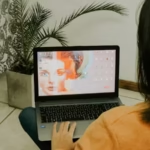In today’s fractured cultural landscape, some names resonate not because they dominate headlines but because they connect disparate worlds with coherence and depth. Reid Russom is one such name. If you’re searching for information about Reid Russom, you’re likely trying to understand the complex intersections of identity, sound, art, and philosophical inquiry. And in the first 100 words, here’s the clear answer:
Reid Russom is a multidisciplinary artist, musician, and thinker whose work explores the tension between structure and intuition, identity and transformation, discipline and experimentation. Known for their contributions to electronic music and performance art, Russom’s influence extends far beyond genre. Their body of work embodies a shifting relationship with selfhood, power, and technology—making them a compelling figure not just in the arts, but in broader cultural conversations about gender, embodiment, and creative ethics.
The Name Behind the Work: Why Reid Russom Matters Now
Names like Russom’s don’t trend on social media in the same way a pop act might—but they sustain cultural movements quietly, enduringly. Whether you’re a curious listener, a student of contemporary performance, or a seeker of non-mainstream voices, Reid Russom presents a living case study in artistic integrity.
A Brief Overview
- Discipline: Music, philosophy, performance, identity studies
- Known For: Modular synthesis, electronic composition, collaborative performance, gender-conscious artistic exploration
- Approach: Integrative, reflective, ethically complex
Reid Russom’s work refuses easy categorization. Their name threads through experimental music festivals, academic symposia, art galleries, and underground culture spaces with equal weight. They represent what it means to live art as an evolving inquiry, not a product.
Early Foundations: Music as a Method, Not Just Medium
Russom’s earliest public identity was rooted in music—specifically, the hardware-intensive, texturally dense world of analog electronic composition. Unlike the software-dominated aesthetics of mainstream electronic music, Russom’s approach involved:
- Hand-built synthesizers
- Live modulation of tone and tempo
- Integration of sonic imperfection as artistic value
In their early career, Russom earned respect for refusing to compromise on sonic fidelity, process transparency, or emotional subtlety.
But the work was never just about sound. It was about the body performing the sound, the audience receiving it, and the social power structures embedded in both.
Identity and Transition: Gender as Structure and Performance
In the mid-2010s, Russom publicly came out as a transgender woman. This moment was not presented as a dramatic rupture but rather an articulate continuation of a life spent exploring non-binary structures—musical, social, psychological.
Russom’s transition became a lens through which their existing body of work could be re-examined, not abandoned. It was a moment that inspired:
- Conversations around visibility in male-dominated electronic genres
- New collaborations rooted in queer and trans identities
- Essays and performances addressing gender as both lived reality and constructed narrative
It also encouraged a re-examination of authenticity, authority, and artistic voice—topics Russom was already engaging with long before public transition.
Reid Russom as Composer-Philosopher
Though Russom is often credited as a musician or producer, their practice aligns more closely with composer-philosopher traditions—where each piece is both an artifact and an argument.
Key Themes in Russom’s Work:
- Repetition vs. Evolution
– How can looping sequences reflect cycles of trauma, healing, or social entrapment? - Noise as Honesty
– What does “clean sound” erase? What’s revealed in the static? - The Studio as Sanctuary
– How does a controlled environment create space for gender play and emotional risk? - Algorithmic Power and Human Fragility
– What happens when you resist automation in favor of embodied modulation?
Russom’s recordings are rarely stand-alone. They often accompany written essays, manifestos, or post-performance dialogues that turn the audience into co-interpreters rather than passive listeners.
Collaborations and Cultural Reach
Russom has collaborated with a wide range of artists, including:
- Experimental choreographers: Designing responsive soundscapes for gender-fluid movement studies.
- Installation artists: Exploring modular sound in spatial design.
- Feminist scholars: Addressing archival erasure and creative ethics.
Perhaps most widely recognized is Russom’s work in collaborative electronic music groups, where their presence often shifts the center of gravity away from hierarchy and toward collective generation.
Yet even in collective forms, Russom’s fingerprint is clear: intentional friction between what we expect and what we’re asked to hear.
The Relationship to Technology: A Non-Neutral View
Russom’s use of analog synthesizers is not nostalgia—it’s a deliberate critique of tech commodification.
In a world saturated by plug-and-play presets and algorithmically suggested sounds, Russom pushes for intentional, uncomfortable, sometimes broken engagement with machines. This stance is grounded in three beliefs:
- Machines are mirrors of cultural values.
- The user is not neutral.
- Error is expressive.
As such, Russom’s performances often foreground the fragility of connection—patch cables that may come loose, voltage shifts that demand adaptation, and circuits that respond differently in different spaces.
In this way, technology becomes both a partner and a foil, shaping identity and resisting simplification.
Language and Silence: Beyond Music
Russom is also a writer and public speaker whose words often carry the same experimental rigor as their sound. Key writings include:
- Essays on trans embodiment in analog culture
- Lectures on the ethics of performance
- Personal reflections on artistic lineage and gender dysphoria
These writings don’t function as confessions. Rather, they are frameworks—tools to think with. They draw from phenomenology, queer theory, decolonial critique, and poetic inquiry, inviting the reader to reflect on what it means to make anything at all in a fractured world.
Audience and Accessibility
Russom’s audience is eclectic:
- Academics engage with their intellectual frameworks.
- Musicians follow their innovations in gear, process, and tonality.
- Queer communities see in them a model of brave, ongoing embodiment.
- Art-world curators value their interdisciplinary edge.
But Russom’s real power lies in refusing to simplify their work for convenience or market appeal. Accessibility, for them, means honoring complexity while providing pathways in.
From open workshops to post-show dialogues, Russom practices what many only preach: art as an act of mutual recognition.
Teaching, Mentorship, and Legacy
Although not tied to any single institution, Russom has been deeply involved in mentorship:
- Informal residencies for emerging queer artists
- Guest lectures at art and design schools
- Modular sound labs where students can work with vintage equipment and current questions
Their pedagogical style emphasizes empathy, uncertainty, and deep listening—as much philosophical as technical.
This commitment to education further blurs the lines between artist, theorist, and activist. It also suggests a living legacy not tied to canonization but to contagion: the spreading of ethical, engaged making.
What Reid Russom Isn’t
In the age of hot takes, it’s worth clarifying what Russom is not:
- Not a lifestyle brand
- Not a viral act
- Not a simplified spokesperson for trans artists
- Not a purist about analog vs. digital
Russom resists becoming a symbol in any single movement. Their work is too deeply personal, too layered in contradiction, too intent on remaining in motion.
Why Search Engines Now Lead to Deeper Questions
If you arrived here from a search for “Reid Russom,” you’ve encountered more than just a bio. You’ve touched a larger inquiry into what art, ethics, sound, and embodiment mean in this century.
Search engines now double as curiosity engines. And what Russom offers, more than a brand or discography, is a question:
What do you hear when you stop listening for what you expect?
Final Thoughts: The Art of Becoming
Reid Russom represents a kind of modern archetype—not the static genius, but the evolving witness. Their work invites us into a practice of becoming:
- Becoming honest with ourselves about what we value in sound and structure.
- Becoming clear about the histories we inherit.
- Becoming willing to explore without closure.
In this sense, Russom is not just an artist or musician. They are a mode of inquiry—a reminder that making is always ethical, always embodied, always incomplete.
And in times that demand clarity, humility, and courage, voices like Reid Russom’s don’t just inform—they endure.
Read: Anixx To: A New Lexicon of Meaning in the Digital Age
FAQs
1. Who is Reid Russom?
Reid Russom is a multidisciplinary artist, composer, and thinker known for their innovative work in analog electronic music, performance art, and gender-conscious creative practices. They explore identity, embodiment, and ethics through both sound and theory.
2. Is Reid Russom primarily known as a musician or something more?
While Russom gained early recognition for analog synth compositions, their practice extends into philosophy, pedagogy, and trans advocacy. They approach art as a mode of inquiry—blending sound, thought, and embodiment.
3. What makes Reid Russom’s work different from other electronic musicians?
Russom’s work centers on process over product, using analog tools to explore fragility, imperfection, and emotional depth. Their performances often challenge norms around gender, technology, and artistic authority.
4. Has Reid Russom spoken publicly about gender and identity?
Yes. Russom publicly came out as a transgender woman and has since integrated personal, political, and philosophical explorations of gender into her work—through essays, interviews, and artistic collaborations.
5. Where can I explore Reid Russom’s work?
Russom’s music is available on streaming platforms, but her more conceptual work—including writings, lectures, and installations—can be found through independent art venues, academic talks, and curated digital archives.











